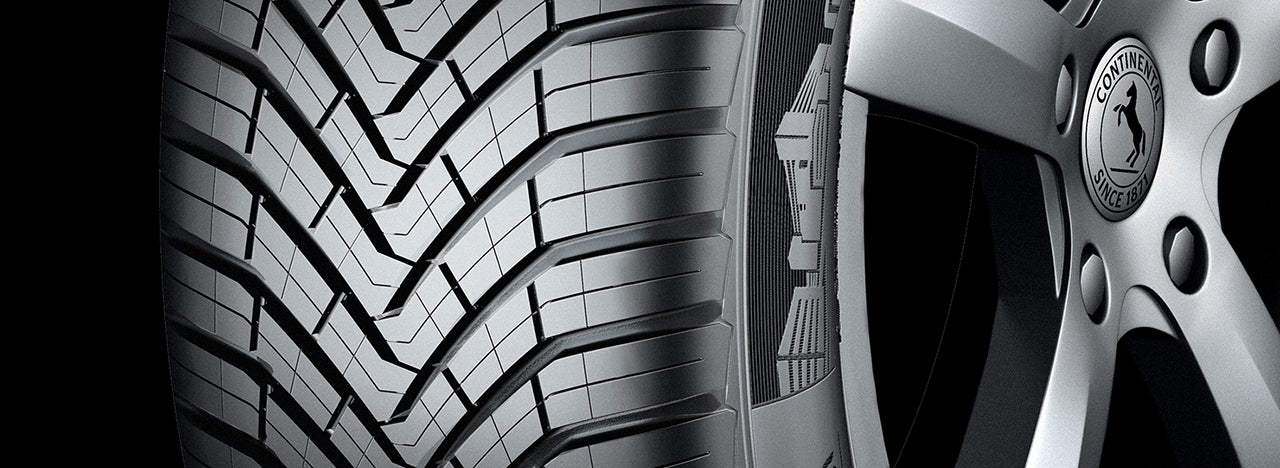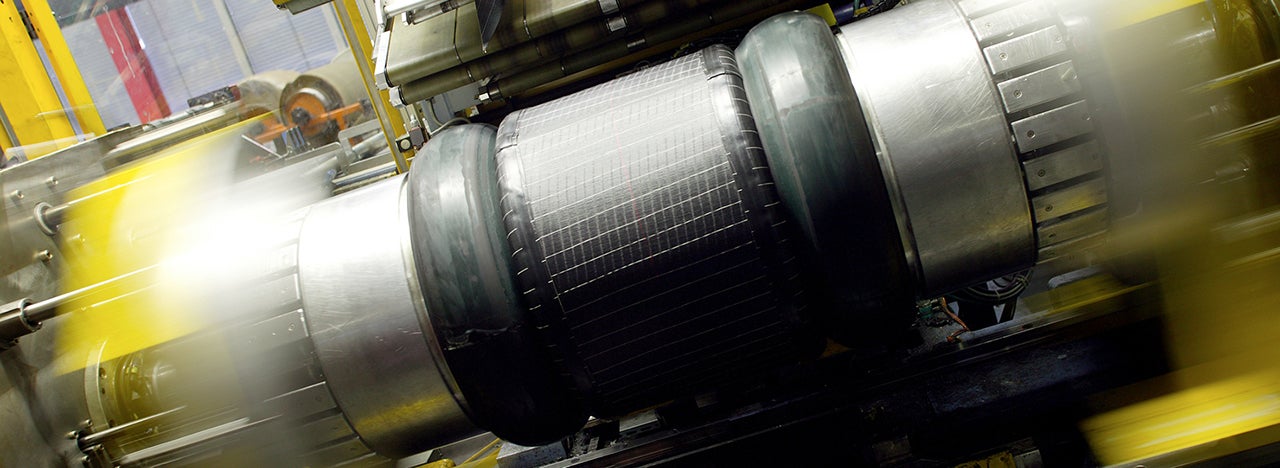
# Tyre Basics
Tyre tread patterns
Tyre tread patterns and their many uses
The tread is the part of the tyre that makes contact with the surface of the road. And if you take a look at different tyres on the market, you'll notice a great deal of variety in their tread patterns.
Why are they so different? Because a tread pattern is a unique design that enhances a vehicle with grip and handling for specific driving conditions. Just like in a detective novel, you could identify a make of tyre by the tracks it leaves on the road.
Every tyre tread has four constituent parts:
- Ribs are the raised section of the tread pattern, made up of tread blocks;
- Grooves are deep channels that run circumferentially and laterally around the tyre;
- Tread blocks are the raised rubber segments that make contact with the road surface;
- Sipes are small, thin slots moulded into the tread blocks.
Taken together, the ribs, grooves, tread blocks, and sipes can be arranged in a unique pattern to modulate the tyre's performance in critical areas like noise, handling, traction, and wear.
And that in turn provides tyre manufacturers with the ability to develop tread patterns to address specific driving needs like wet braking, dry handling, aquaplaning (hydroplaning) resistance, and traction on ice and snow.
How many tyre tread patterns are there? Quite a few. But broadly speaking, we can distinguish between three categories of tyre tread pattern. Which one does your car have?

Symmetrical tyre tread pattern
The most common type of pattern is symmetrical; it's suitable for passenger car tyres, but not for high-performance use. Tyres with this design have continuous ribs or independent tread blocks across the entire face of the tread, and both halves of the tyre feature the same pattern.
Key features:
- Smooth driving
- High directional stability
- Low rolling resistance
Tyres with symmetrical patterns provide the owner of the vehicle with the most flexibility for tyre rotation without affecting day-to-day performance. They're also quiet, long-lasting, and fuel-efficient. However, they are less adaptable to changing conditions on the road. So even though symmetrical patterns deliver steady grip on a dry road, they won't be as effective in wet conditions as other tyres.
Directional tyre tread pattern
A tyre with a directional tread pattern is designed to roll forward in one direction only. It has lateral grooves that meet in the middle of the tyre tread, resembling the shape of an arrowhead. Its purpose is more than sporty aesthetic, however. The V-shaped grooves are more capable of resisting aquaplaning (hydroplaning) at high speeds by displacing water more efficiently through the tread pattern.

Another benefit of directional tread is extra traction, which provides excellent handling on snow or mud. For this reason, a good all-season or winter tyre is highly likely to have a directional tread pattern. The extra traction is also useful for performance tyres on high-performance vehicles.
Key features:
- High protection against aquaplaning
- Excellent handling on snow and mud
- Very good road holding at high speed
The point to remember about directional patterns, however, is that tyre rotation becomes a bit more complicated. They can only be rotated vertically – for example, from the front of the car to the back – otherwise, the pattern will be oriented in the wrong direction when fitted to a wheel on the other side of the vehicle. That would render the benefits of the tyre tread useless.
You can keep track of the correct orientation using the arrow indicator printed on the sidewall of the tyre. It's in the same direction as the pattern, pointing in the required direction of travel.
Asymmetric tyre tread pattern
A tyre with an asymmetric pattern features two separate tread designs, one on the inner half and another on the outer half of the tyre. It looks unusual, but both halves serve a distinct purpose. The inner tyre tread is responsible for water displacement and protection against aquaplaning. The outer tyre tread has rigid tread blocks for higher lateral stiffness, which provides high grip when cornering and driving on dry surfaces, and quieter interior noise.

This combination of features makes asymmetrical tyres especially popular for use on ultra-high-performance cars.
Key features:
- Excellent handling
- High curve stability
- Good grip in wet conditions
However, just like a directional tyre pattern, care must be taken with tyre rotation. Vertical rotation between front and back are the options here. Indicators on the sidewall will guide correct fitting.
Do not mix tyre tread pattern
When buying new tyres, avoid mixing different types, sizes, or brands of tyre on a single vehicle. For best results, source the identical make and model of tyre to the ones you already have on your wheels, to maintain optimal performance characteristics.
Another thing to keep in mind when replacing tyres; replacing a pair of tyres is safer than replacing just a single tyre. The newest tyres should be fit on the rear axle, and partially worn tyres to the front axle.
If this isn't possible, then drivers are advised to ensure that the replacement tyre has the same tyre tread pattern as the other tyre on the same axle. Mixing the patterns will impair the handling characteristics of your car; it could even be dangerous.
Related content
-
 2022/09/07Tyre typesThe modern tyre is a complex work of engineering designed to tackle a myriad of challenges. Learn about the different tyre types, and their pros and cons.Read more
2022/09/07Tyre typesThe modern tyre is a complex work of engineering designed to tackle a myriad of challenges. Learn about the different tyre types, and their pros and cons.Read more -
 2022/09/07Tyre productionA modern tyre is made from many components. Follow the tyre manufacturing process step by step, from raw materials to finished tyres.Read more
2022/09/07Tyre productionA modern tyre is made from many components. Follow the tyre manufacturing process step by step, from raw materials to finished tyres.Read more -
 2022/09/07Tyre mixtureContinental makes tyres with the highest quality materials; modern car tyres contain up to 25 components and as many as 12 different rubber compounds.Read more
2022/09/07Tyre mixtureContinental makes tyres with the highest quality materials; modern car tyres contain up to 25 components and as many as 12 different rubber compounds.Read more